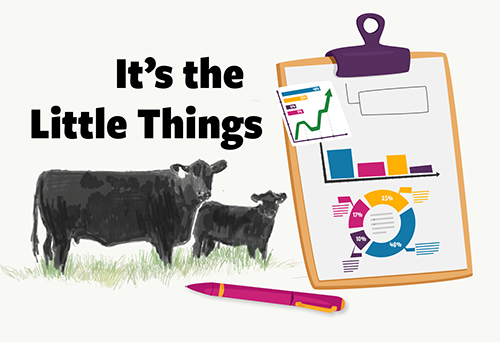by Morgan Boecker, Certified Angus Beef LLC

When it’s hot and sunny, cattle seek shade. If they can’t find any, it could cost you money.
In 2003, scientists estimated heat stress cost the U.S. beef industry $369 million a year. The condition occurs when an animal can’t dissipate heat as fast as it’s incurred. Providing shade when needed is one way to mitigate stress and produce high-quality beef.
Stress of any kind affects performance and health, but also well-being and behavior, a special focus for Colorado State University (CSU) animal scientist Lily Edwards-Callaway. Her team’s literature review found shade benefits vary by location, structure type and the weather.
Uncovering more questions than answers, the study lays out a basis for updating previous work with results from modern production at feedyards and packing plants.
“Cattle management practices have progressed, and technology has changed,” Edwards-Callaway says. “I’m sure producers have a lot of innovative, cost-effective ways to shade cattle to improve performance. I think there’s a great need to dig a little deeper.”
The key indicators within shade studies vary, but no matter the production system, results favor shaded groups.
Weather variation over time makes it complicated. Places with hot and humid summers have a greater need for protection, says Edwards-Callaway, “but we just don’t know how much people are really using shade.”
Feedyard economics adds to the complexity. Seasonal and annual weather shifts influence how long a shade structure can endure. Those features become less expensive the longer they can be maintained.
“Variability in the climate really skews the data we looked at,” adds Daniel Clark, meat scientist with the Certified Angus Beef® (CAB®) brand and collaborator in the research. “A big takeaway is to just be prepared.”
A 1995 heat event in Iowa led to a 4.8% death loss in non-shaded feedyard pens, compared to 0.2% in shaded pens. Those are likely conservative estimates today with recent temperature extremes, Edwards-Callaway says.
Weather fluctuation affects final carcass quality, too, but Clark says the extent of mild and severe weather events varies. More predictably, extreme heat brings high mortality.
“If you’re trying to gain every benefit of high-quality beef that you can, then you probably need to think about adding some shade and protecting cattle for when there is a major weather event,” he says.
Animal welfare is connected to every outcome, Edwards-Callaway says. Addressing basic health and production factors ensures cattle perform to their highest potential.
She’s already working with packing plants to see what kind of effect shade may have right before slaughter. This ongoing project is looking at distance cattle travel to the plant, along with time waiting to unload and reach the point of harvest. It’s also tracking pen density and weather, and their effects on mobility, bruising and carcass characteristics.
“Do producers think shade is important?” she asks. “What factors dictate whether cattlemen want to use shade or not?”
Finding answers to these and other questions will affect beef’s image, Edwards-Callaway says, as well as productivity and profitability for the entire supply chain.
Find the paper, “Impacts of shade on cattle well-being in the beef supply chain,” in the February 2021 Journal of Animal Science. Read it online at https://cabcattle.com/impacts-of-shade-on-cattle-well-being-in-the-beef-supply-chain.
Editor’s note: Morgan Boecker is producer communications manager for CAB. Photo courtesy CAB.
